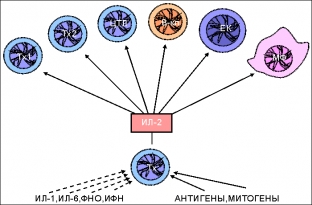In aesthetic surgery and cosmetology, doctors are constantly faced with the problem of effective healing of skin wounds. Physiological processes take place in the body of each person, which are controlled by complex regulatory mechanisms, and wound healing – this is one such process.
However, there are certain characteristics of individual reactions of organisms, and in some cases, wound healing may not occur exactly as expected. Through research and experiments, it has been established that cytokines play the main role in the process of skin wound repair, and it is with their help that long-term non-healing wounds can be effectively treated.
What role do cytokines play in the treatment of chronic wounds
Cytokines are peptide molecules that trigger the process of skin wound repair in the human body. They are produced by immune cells and are hormone-like proteins and peptides. Being one of the first to react to the occurrence of skin damage, cytokines trigger the processes of epithelialization and granulation of tissues, influencing the formation of a scar.
Modern studies have determined that in the granulation tissue and exudate of non-healing wounds for a long time, very low concentrations of cytokines are observed, and such an important cytokine as TsFR is almost completely absent in them. Therefore, replenishing the deficiency of cytokines contributes to & nbsp; effective treatment of chronic wounds.
Cytokines:
- experiments proving the role of cytokines in the repair of skin wounds;
- sealed dressings increase the concentration of cytokines;
- Genetics is the future: how DNA can boost cytokines.
Experiments proving the role of cytokines in the repair of skin wounds
In order to confirm the important role of cytokines in the treatment of long-term non-healing wounds, several experiments were carried out:
- experiment on rats: the cytokine TcFR was injected into an artificially created wound on the skin of rats, which accelerated the formation of granulation tissue containing a large number of fibroblasts and macrophages. Thus, TcFR indirectly increased the level of TGF-beta, which stimulates collagen production;
- experiment on cut skin of rats: in this experiment, the resistance of the skin to tear was studied. Under the influence of the injected cytokine TGF-beta, an increase in the deposition of collagen between the edges of the skin wound was observed, due to which the adhesion of its adjoining edges increased significantly;
- Pig experiment: In this experiment, the cytokine PRK was injected into one half of a wound on the skin of a pig, while the other side remained the "control". As a result of the experiment, it was found that on the side of the lesion into which the cytokine was injected, the epidermis was much thicker.

Sealed dressings increase the concentration of cytokines
To date, it has been established that it is possible to influence the healing process of chronic wounds by direct application of cytokines to the wound surface to compensate for their deficiency. Currently, special hermetic dressings are used for skin wounds, which allow keeping exudate containing cytokines in close contact with the granulating surface of the wound. Such dressings can accelerate the healing of an already granulating wound, while they have little effect on chronic ulcers. Airtight dressings are widely used to treat shallow burns and donor areas.
Genetics is the future: how DNA can increase the concentration of cytokines
Work is actively underway to create a new approach to the treatment of chronic wounds with cytokines, based on molecular biology methods. Experiments attempt to force wound cells to synthesize cytokines. RNA or DNA molecules that affect the synthesis of cytokines are transfected into fibroblasts or keratinocytes isolated from the wound, then the transfer cells are transferred back to the wound.
Another approach is direct transfer of DNA into cells of healing wounds using gold microglobules. Genetic methods make it possible to achieve a high concentration of cytokines and accelerate the healing process of skin wounds. All these studies can significantly affect the effectiveness of the treatment of long-term non-healing wounds.







Add a comment